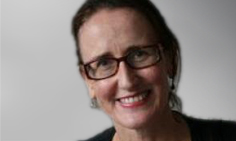BACK in 2012, the then Labor federal government announced a review of private health insurance cover for “natural therapies”, declaring those that could not demonstrate clinical effectiveness would no longer be eligible for rebates.
The government wanted to ensure that the very substantial taxpayer funds directed at propping up the private health insurance industry were going to treatments that might actually provide some kind of benefit to patients.
That sounds reasonable enough, although, as I wrote at the time, it caused outrage in some predictable quarters.
The report of that inquiry, released last week, found not one of the natural therapies examined could show the reliable, high-quality evidence needed to demonstrate clinical effectiveness.
A lack of evidence does not, as the report makes clear, necessarily mean the therapies don’t work, but it certainly means they can’t show that they do.
“Natural therapies emerged in an environment where there was not a premium on rigorous evidence base”, the report says, possibly erring on the side of generosity.
It goes on to say that properly conducted research might find some of the therapies to be effective in particular conditions.
“This would appear more likely for those therapies that have some supporting evidence and scientific plausibility (for example, massage therapy) than for those that do not (for example, homeopathy).”
Other therapies covered by the inquiry included aromatherapy, herbalism, iridology, kinesiology, naturopathy, pilates, reflexology and yoga.
The inquiry was limited to therapies not provided by an accredited health care professional or covered by Medicare, but that were covered by private health insurance. As a result, it did not include some other therapies that might be considered alternative, such as acupuncture or chiropractic.
I should perhaps declare a conflict of interest here. I’m a great believer in one of the therapies on the list.
I have no doubt my weekly — though, sadly, unsubsidised— Pilates class helps me manage the musculoskeletal issues that come from spending too much time at a keyboard.
But does my conviction that it’s doing me good mean taxpayers should help fund my exercise program? Of course not.
Now that Pilates and all the other alternative offerings covered by the inquiry have failed to make the case for continued government subsidies, what’s the next move?
It’s a sad fact that reports commissioned by their predecessors in office don’t tend to inspire great enthusiasm in politicians of any stripe.
Health Minister Sussan Ley told The Australian last week that removing private health insurance rebates for unproven therapies would be unlikely to save enough money to justify the costs involved.
She did go on to declare her support for “the theory of government rebates being paid only for health treatments that are evidence-based” before launching into an attack on Labor’s motives for setting up the inquiry in the first place.
The thing is, how we allocate government subsidies matters — and it’s not just a question of the money.
When health insurance supports particular therapies, it provides a de-facto endorsement that might mislead consumers into believing they have at least some basis in evidence.
Practitioners of some of these unproven therapies have, in fact, used their eligibility for rebates in exactly that way.
The Australian Kinesiology Association, for example, has this to say: “The maturity of ‘Complementary Therapies’ is shown by some of Australia’s major health funds now paying rebates for many therapies, including Kinesiology. This acknowledges what is happening in the health sciences in the 21st Century.”
Let's hope what is happening in the health sciences in the 21st century isn't the abandonment of scientific rigour.
Jane McCredie is a Sydney-based science and medicine writer.

 more_vert
more_vert
It seems that these “extras” are not about improving health, but more about providing a product with some potential benefits for young healthy people. How else to market a product to insure people for a service they will rarely need?
That should not, however, preclude action from the government. It might be time to allow young healthy people to live without health insurance, and use the subsidy savings to provide public health care.
The government has only itself to blame if it gives carte blanche subsidies across the board for “extras”. Subsidies should be confined to proven therapies, and ideally not provided at all for extras. It would make the whole system much more transparent, and open up opportunities for government to fine tune how their subsidisation of private health care is spent, if all subsidies were paid to the biller (or the patient), with the amount reflecting not only the across the board subsidy to the health insurance industry, but also the extra amount that would have been secretly payable to the insurer under the community rating scheme.
Win-win for government and the people; maybe not for the insurers.
Thank you for continuing to raise this Jane. It seems there are some health professionals who are uncomfortable about discussing this issue with clients and patients and some (including many pharmacists) who actively support non-evidence based therapies. Your comment about government inaction amounting to ‘de-facto support’ is spot on! It is this that so often undermines any attempt (by ‘proper’ health professionals) to counter some of the outrageous claims made by proponents of such interventions and treatments.